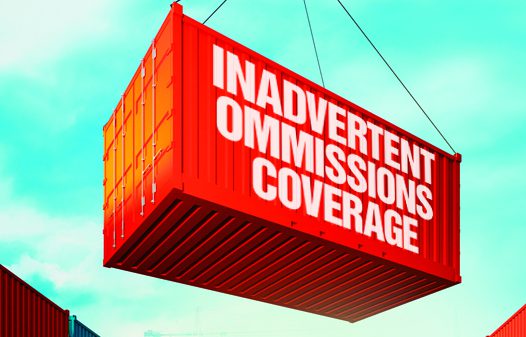Will “inadvertent omissions” coverage be the next European import?
By Joseph S. Harrington, CPCU
Liability coverage for errors and omissions is “old hat,” but if you were an underwriter how would you feel about first-party coverage for a client’s oversight? In coming years, commercial property insurers in the U.S. could have access to a new tool for providing such coverage.
Today, staff members of the Insurance Services Office (ISO), the largest advisory organization (bureau) serving the U.S. property/casualty industry, are considering whether to develop an endorsement for providing coverage for “inadvertent omission to insure.” Nothing specific has been proposed to date.
Inadvertent omission to insure provisions generally provide limited coverage for physical damage to buildings or locations of an insured that have been left off a declarations or schedule of coverage, but with no intent to mislead the insurer.
These clauses are commonly written into basic commercial property policies in continental Europe and the United Kingdom. They are also routinely requested by risk managers of large U.S. companies that qualify as “exempt commercial policyholders” (ECP) allowed by some states to purchase coverage on non-regulated policy forms.
In its typical form, inadvertent omissions coverage is the converse of standard coverage for newly-acquired locations:
- Newly acquired locations are typically insured up to the full applicable limit for a limited period of time, usually 30 days in base forms, but often extended to longer periods.
- Locations inadvertently omitted, when insured, are typically covered for the full policy period under a separate, lower limit. (These locations could include properties omitted at the onset of the policy, but also newly acquired locations not declared after expiration of the time limit for newly acquired locations coverage.)
To date, the most common approach in the U.S. to insuring losses at locations or properties not declared has been to include non-standardized endorsements for “errors or omissions in reporting.” These endorsements are generally used to address honest errors in reporting monthly, quarterly, or semiannual values, provided the insured reports errors promptly after detecting them and pays the proper adjusted premium.
“These E&O endorsements can add coverage for a location that is omitted or misreported as leased, but only up to the sublimit,” says Geoffrey Greeves, an attorney specializing in property insurance for the law firm Bradley Arant Boult Cummings LLP. “Normally that sublimit is low, only a tiny percentage of the policy limit, and it may not include business interruption coverage.”
The only other way for most commercial insureds in the U.S. to avoid the exposure for losses at undeclared locations is to purchase blanket coverage, according to Greeves.
The practice of treating reporting errors as E&O exposures is one reason U.S. insurers have not followed Europe’s lead in this matter. However, since ECP accounts in the U.S. are requesting the coverage, commercial property carriers are showing increased interest in making the coverage available to smaller accounts.
Some regulators may balk at initial filings of inadvertent omissions coverage, asking why it should be needed if insureds have a choice between blanket or scheduled coverage. Would the coverage be illusory if underwriters have done their job thoroughly?
Yet, we all know that honest mistakes happen, and public officials, not just insurance regulators, have developed acute awareness in recent years to the value of having insurance in place to respond to unexpected events.
This European import will likely find a receptive American market.
Joseph S. Harrington, CPCU, is an independent business writer specializing in property and casualty insurance coverages and operations. For 21 years, Joe was the communications director for the American Association of Insurance Services (AAIS), a P-C advisory organization. Prior to that, Joe worked in journalism and as a reporter and editor in financial services.





